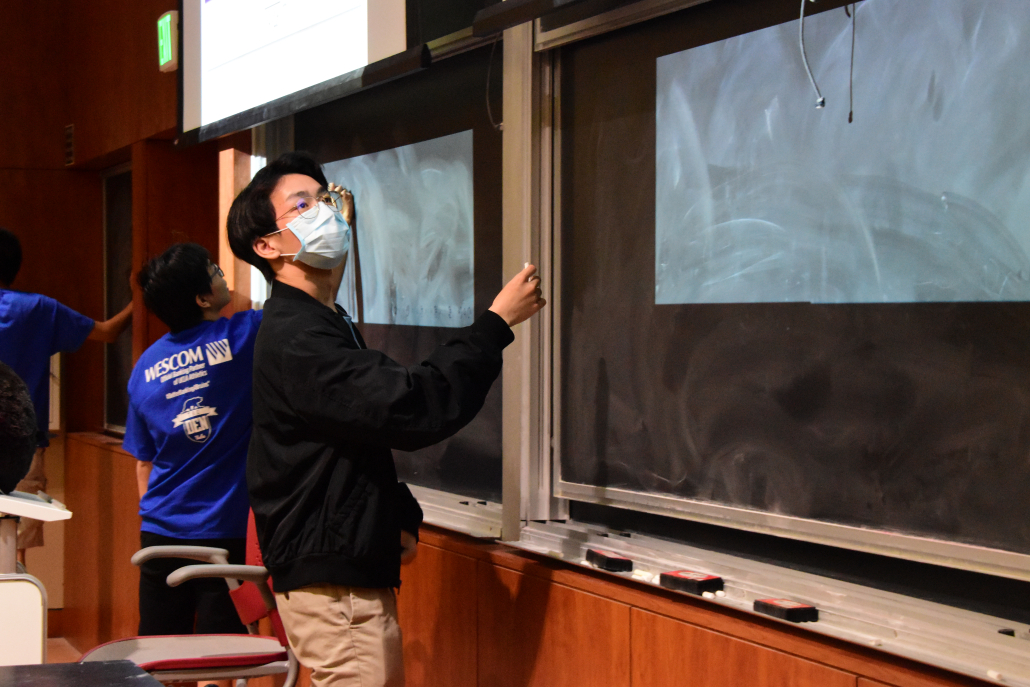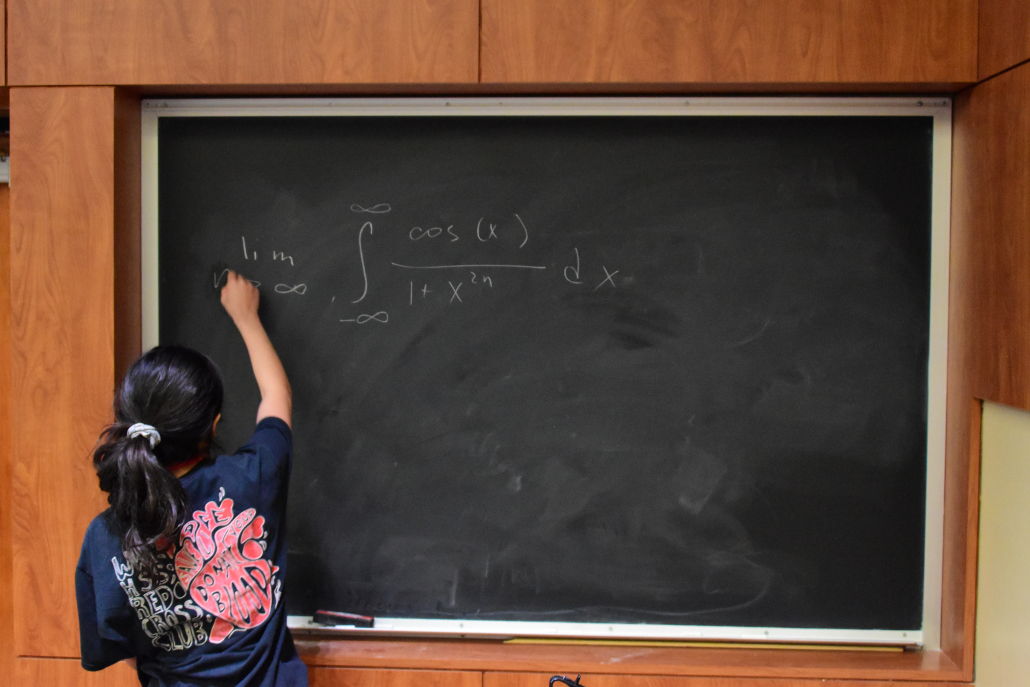USC, UCLA square off at second integral bee

Among the crinkle of Subway sandwich wrappers, cross-town rivals chatted in anticipation for the first UCLA x USC Integral Bee the Sunday after the Trojans’ victory against the Bruins at Rose Bowl Stadium the day before.
Competitors and spectators filled the seats of Stauffer Science Lecture Hall, excited to participate in the friendly head-to-head elimination bracket tournament hosted by the UCLA x USC Math Club. Last semester, the USC Math Club hosted the first ever integral bee for USC students at the University. This semester, the Bruins came out on top, winning the top three places in the competition.
“The reason we picked integrals is because that’s one of the first things that people learn in college math,” said Ajay Srinivasan, a sophomore majoring in mathematics and one of the event’s organizers. “It’s also a very easy example of how problem solving should be approached several times. It’s sort of the first window into problem solving for a lot of people and it was for me, too. It’s accessible. It’s fun.”
After a quick overview of rules and tips and a shout-out to USC Football’s win, the competition began. In the first two rounds, two random pairs of participants were called to the boards at the front of the hall. Each round began with a countdown to “go,” when participants began to examine the integral projected onto the screens above them.
Some competitors furiously etched their ideas on the board as they worked out the question while others wrote out the question or parts of the question before contemplating the problem closer. U-subs and trigonometric functions also appeared on the board.
June Shao, a sophomore majoring in electrical and computer engineering, competed in the event.
“The first time you get a question, you start panicking, and then you just take a few seconds to actually look at their problem and try to destress and calm yourself down and that helps because you can see ‘oh, this is really obvious’ or ‘oh, I can see this trick,’” Shao said. “If it’s really complicated, you may not see it at first.”
Contestants had less than a minute to solve each question. A quick solution, if not entirely correct, could result in a strike. After two strikes, the competitor was eliminated.
As competitors worked through the problems, their sketches and furious chalk-writing on the board kept audience members captivated by the math. Some audience members worked through the questions on paper in their seats, alongside the competition. In one question that stumped competitors, three out of four got it wrong the first try.
Throughout the competition period, Srinivasan, the moderator, shared hints for the question if competitors looked lost like “a polar bear in an Erewhon,” as written on the Integral Bee’s introduction slides.
If a competing pair could not solve the given question, they continued to the next round with a new question. If the question remained unsolvable, both members of the pair lost the round. Contrarily, the quickest round lasted nearly five seconds.
“I didn’t know how to solve most of the problems, but I like to people-watch,” said Abraham Solovy, a senior majoring in political economy and an attendee. “I know a lot of the people in the club so I thought that I could come support.”

In a surprise integral, competitors were faced with a word problem filled with emojis and colloquialisms. Audience members erupted in laughter and competitors stepped away from the projection of the problem with puzzled faces and questioning looks. After a few seconds, the event coordinators relieved competitors of their misery and revealed the math integration of the word question, and the competitors quickly got back to the boards to solve it.
As soon as competitors circled or boxed their answers, Scott Macdonald, an assistant professor of physics and astronomy, reviewed their responses. Some competitors were stumped by trickier questions, while others were aggravated by missed positive and negative numbers after their work was checked.
“We were excited with how things went, it was a good vibe,” said Angel Hernandez, a senior majoring in business and an organizer of the bee. “Everyone seemed to have a friendly competition. Especially when we got to the harder integrals, everyone got excited.”
Whenever Srinivasan asked the competitors if they wanted the same level of difficulty or harder questions for the following round, the crowd would respond with a resounding response for more difficult integrals.
“[I loved] getting a question right, but also seeing how people were cheering each other on, even those not from their school,” Shao said.
In good spirit, audience members clapped as competitors made their way to the board and solved problems.
“I was surprised by the passion it creates,” Solovy said. “I’ve never been to a USC event with so much passion, which is wild.”
Hernandez said Srinivasan began the first Integral Bee last year with the goal of “testing out” math skills.
“For a lot of people, math is really fun, so having the space to solve integrals with an audience is not something you see every day,” Hernandez said. “It’s something we wanted to bring to the table.”
In the future, the math club hopes to “integrate” more schools into the Integral Bee such as Caltech, Loyola Marymount University and other nearby colleges.
“It was an enjoyable experience,” Shao said. “It was quite fun to see everyone congregate over a love of integrals — a love of solving problems.”

